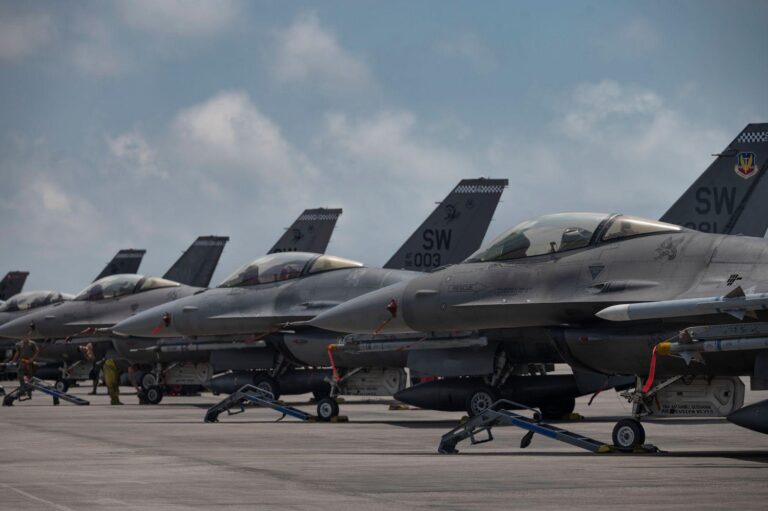In a demonstration of transatlantic military cooperation and airpower readiness, the air forces of the United States, United Kingdom, France, and Finland have come together to participate in Atlantic Trident 25, a multinational exercise hosted in Finland. The event, highlighted on usafe.af.mil, underscores the growing strategic partnerships and interoperability among NATO allies and partners in the North Atlantic region. The exercise aims to enhance operational capabilities, foster collaboration, and reinforce collective defense commitments amid evolving global security challenges.
U.S., UK, French and Finnish Air Forces Strengthen Multinational Cooperation in Atlantic Trident 25
In an impressive display of allied airpower, air forces from the United States, United Kingdom, France, and Finland have converged in Finland to engage in Atlantic Trident 25, a high-profile multinational exercise focused on enhancing interoperability and tactical proficiency across diverse aerial platforms. This joint operation underscores the commitment of participating nations to maintain a secure and stable Euro-Atlantic environment, fostering seamless coordination in air defense, surveillance, and rapid response scenarios. Pilots and support crews are actively engaging in complex training missions designed to simulate real-world contingencies, including electronic warfare, air-to-air combat, and search and rescue operations.
Key Exercise Elements Include:
- Cross-national command and control integration
- Multifaceted air combat training missions
- Joint intelligence sharing and reconnaissance
- Advanced logistics and maintenance collaboration
| Participant | Aircraft Types | Exercise Focus |
|---|---|---|
| U.S. Air Force | F-35A Lightning II, KC-135 Stratotanker | Stealth tactics, aerial refueling |
| Royal Air Force (UK) | Typhoon, Voyager Tanker | Air superiority, mid-air refueling |
| French Air and Space Force | Rafale, A400M Atlas | Multirole combat, strategic airlift |
| Finnish Air Force | F/A-18 Hornet | Defensive tactics, reconnaissance |
In-Depth Analysis of Tactical Training and Interoperability Enhancements During the Exercise
The recent multinational exercise highlighted significant advancements in tactical training, positioning participating air forces to better address emerging operational challenges. Pilots and ground crews underwent rigorous simulations that focused on dynamic threat scenarios, enhancing their agility and precision in real-time decision-making. Key elements of this phase included:
- Enhanced Joint Mission Planning: Streamlined coordination tools allowed for seamless integration of assets from each nation, ensuring mission objectives were clearly communicated and synchronized.
- Advanced Threat Replication: Use of cutting-edge simulation technology provided realistic encounters with integrated air defense systems and electronic warfare tactics.
- Adaptive Air Combat Drills: Pilots practiced multi-domain engagement maneuvers emphasizing flexibility and rapid threat reassessment.
Interoperability took center stage, with communication protocols and data-sharing frameworks extensively tested to forge a cohesive operational network. The collaboration emphasized:
| Aspect | Improvement | Outcome |
|---|---|---|
| Secure Communications | Unified Encryption Standards | Real-time, encrypted data exchange |
| Command & Control | Integrated Network Systems | Faster decision cycles |
| Cross-National Training | Joint Standard Operating Procedures | Enhanced coordination in combined operations |
These interoperability enhancements not only improved the efficiency of collective responses but also solidified trust and operational cohesion among the U.S., UK, French, and Finnish air forces, setting a solid foundation for future joint endeavors in the region.
Recommendations for Future Joint Air Force Operations Based on Lessons Learned at Atlantic Trident 25
Atlantic Trident 25 highlighted the imperative for enhanced interoperability among coalition air forces. Key takeaways emphasized the need for standardized communication protocols to ensure seamless information exchange across different platforms and national systems. Embracing advanced joint training modules tailored to multi-national operations will foster quicker decision-making and more cohesive mission execution in future deployments.
Additionally, the exercise revealed several opportunities for technological integration and resource sharing. Prioritizing real-time data fusion and cross-platform electronic warfare tactics emerged as critical for maintaining air superiority. The following recommendations aim to boost operational effectiveness in upcoming joint initiatives:
- Implement unified command and control frameworks to streamline coordination among diverse forces.
- Enhance joint intelligence sharing capabilities through secure, interoperable networks.
- Invest in combined live-virtual-constructive training environments to simulate realistic combat scenarios.
- Expand cross-training programs to deepen cultural and tactical understanding.
| Focus Area | Recommended Action | Expected Impact |
|---|---|---|
| Communication | Standardize protocols across nations | Reduced miscommunication risks |
| Training | Joint live-virtual-constructive exercises | Improved mission readiness |
| Concluding Remarks
The Atlantic Trident 25 exercise underscores the enduring commitment of the U.S., U.K., French, and Finnish Air Forces to fostering international cooperation and enhancing collective defense capabilities. Conducted in the strategically significant airspace over Finland, the joint drills demonstrate the participating nations’ readiness to address emerging security challenges in the Euro-Atlantic region. As global geopolitical dynamics continue to evolve, such collaborative efforts remain crucial in promoting stability, interoperability, and mutual understanding among allied air forces. |




